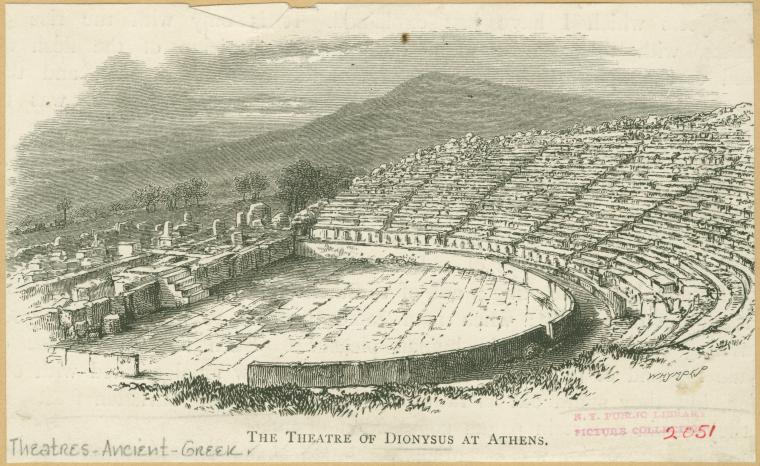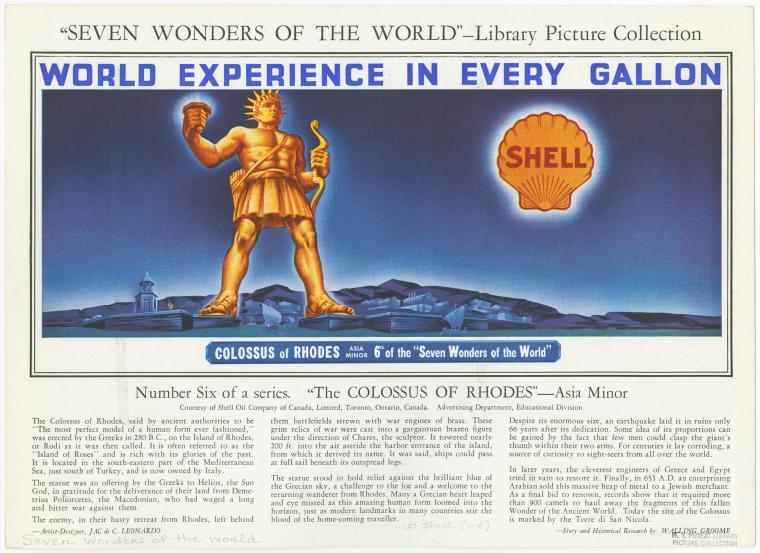"Athens, Sparta, Rhodes"
I decided to travel to ancient Greece because I have always had such an interest in life on the mediterranean as well as greek mythology. I set forth to visit three different Greek poleis to get a better understanding of the way people lived in Greece, and what was important to them. My travels began in Athens. Athens is the place where the very first modern Olympics took place. So I traveled to the Panathenaic stadium, and it is said to be the "only stadium in the world built entirely out of marble" (Panathenaic Stadium Athens 2019 para. 1). The Panathenaic stadium was used for the very first time in 330 BCE, but it originally had a rectangular shape, which was typical of Greek structures. However, under Herodes Atticus, he rebuilt the stadium and gave it a horseshoe shape, typical of Roman structures.
The first modern Olympics almost didn't happen in Athens, because Greece had filed bankruptcy and couldn't fund the olympics on their soil. However, Dimitrios Vikelas was "adamant that holding the first Olympic games was an honour and something that Greece deserved" (Panathenaic Staidum Athens 2019 para. 7). Thanks to Vikelas and a wealthy merchant, George Averoff, I am standing in front of this marble stadium in Athens. This honor is important for Greek society because they hosted the first ancient olympic games, so I.T only makes sense to allow them to host the first modern olympic games that will continue to be held every 4 years.
The Panathenaic Stadium was a common ground for so many different people. The people of Greece would come to watch swimming, gymnastics, weightlifting, wrestling... etc. The stadium would be packed with hundreds of thousands of people, all close together cheering on their favorite athletes and watching their favorite sports, with people from around the world. The games brought together athletes from 14 different nations, but the largest delegations were from Greece, Germany, Great Britain, and France.
Since I loved traveling to the Panathenaic Stadium and seeing the way greek life came together with other nations, I decided to stay in Athens to divulge in their drama. Athens was known as the birth place of tragedy. I set off to the Theater of Dionysus next which is the "most famous ancient Greek theater and the site of the renowned Athenian drama festivals" (Nardo 2007). The theater is located at the southeastern foot of the Acropolis, and was built in honor of the fertility god, Dionysus. It was originally built with wooden seats, but those collapsed and ended up killing a lot of people, which is why it has stone seats now. This theater ended up being a model theater for other Greek theaters, but also other theaters throughout the world. I felt very lucky to be visiting this theater that held significant important to other theaters constructed throughout the world.
Theater was so important to Athenians that even prisoners were allowed to be released from jail temporarily so that they could attend. These plays were so important, once again, because they were used to honor Dionysus. They also held competitions in playwriting and performing, within their own towns and in other towns because every Greek town had at least one theater. Athens was the main center of these festivals and theaters and they spread their love of theater throughout so that everyone could have some sort of common identity. Once again, the Athenians used their accomplishments to really bring people together.

I took my travels to Sparta next. Sparta is known for their military, and so I wanted to get a sense of their military life. Boys as young as the age of 12 were sent off to the barracks to train to be warriors. That's what Spartans were known as, warriors. They go through a great deal of training; their life was dedicated to being a Hoplite (a spartan soldier). Homer's The Odyssey portrays the struggle of a Spartan soldier on his 10-year journey home from the Trojan Wars. What he faces when he gets home is devastating for he is "at first unrecognizable to his wife" (Higgins 2013 para. 5). Spartans spend their whole lives becoming this magnificent soldier bred for war, so the question really does present itself, can soldier's really return home?
As I travel to Sparta and visit the ancient military barracks and see the history of soldiers, the Odyssey had never rang so clear. However, Sparta had many accomplishments when it comes to their military. They created a formation called the phalanx and I.T was "living proof that people are stronger together than apart" (Backman 101). The Phalanx was a group of Hoplites in about 8 horizontal lines with 10-20 soldiers. This unit would rush at the enemy and smash through them. This was an immensely powerful force, that the Spartans thought of. This vase is one of the first depictions of Hoplite soldiers in a phalanx formation. The soldiers are faceless, which shows that a phalanx was all about discipline and group-mindedness, which were strong values in Spartan's extremely successful military.
I spent the last of my time in ancient Greece in Rhodes, where the Colossus of Rhodes is located. The Colossus of Rhodes is one of the Seven Wonders of the World along with places like the Great Pyramid of Giza, the Hanging Gardens of Babylon, the Lighthouse of Alexandria... etc. This statue was so important to Rhodians because I.T was a symbol of their success in the defense of their land against the Macedonians. The people of Rhodes built this statue to honor Helios for the deliverance of their land from war with Macedonia. The statue is said to stand 100 ft tall, on top of a 50 foot platform. Mythology was a main source of religion for the Greek people, and just like the Athenians put on drama festivals to honor Dionysus, Rhodians erected a 33m high statue to honor Helios.
The statue was made, and made to look like, in honor of the sun God, Helios. The worship of Helios was important to the people of Rhodes because the name of their island "derives from the nymph Rhodos who bore seven sons to Helios, the patron of the island" (Cartwright para. 6). I was very lucky to be able to travel to ancient Greece to see this statue because nowadays, not much is known about it because it was toppled down by an earthquake in 228 or 226 BCE. The people of Rhodes speak very highly of Helios and visited the statue to honor him. It was devastating when it toppled down because of the earthquake. However, as of 2008, "government officials in Rhodes announced plans were in "the drawing board stage" for a new Colossus" (Nix 2015 para. 4). If these plans are followed through, I will have to travel back through Rhodes to see the new Colossus!



No comments:
Post a Comment